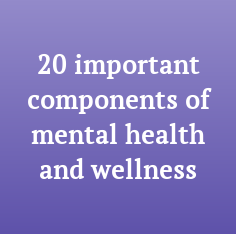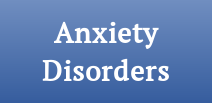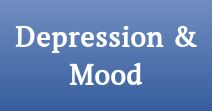Anxiety & Depression Help
Garden City Therapy LCSW
Call 516 828 2622 |[email protected]
Garden City Therapy PLLC
233 7th Street. STE 200 Garden City, NY 11530
Anxiety
Anxiety disorder is a broad term that may refer specifically to generalized anxiety disorder or more broadly to a group of related mental health conditions. In fact, anxiety disorders are generally divided into main types, each involving heightened or disproportionate reactions to everyday or even non-threatening situations.
Types of anxiety disorders include:
Generalized Anxiety Disorder (GAD): The most common form of anxiety disorder, GAD involves ongoing and excessive worry, tension, or fear that may arise without a clear reason. Unlike phobias, it doesn’t always have a specific trigger, and similar to panic disorder, symptoms can appear suddenly and intensely. Anxiety is considered a disorder when its intensity or persistence is out of proportion to the situation or continues long after the stressor has passed.
Phobia Disorder: People with phobias experience overwhelming fear in response to specific objects or situations—such as heights, flying, or clowns. Encountering their trigger can lead to strong emotional or physical reactions, often causing individuals to avoid situations where the trigger may appear.
Panic Disorder: Characterized by sudden and unpredictable episodes of intense fear, panic disorder often leads to panic attacks. During an attack, individuals may experience symptoms such as sweating, heart palpitations, or shortness of breath. Because of this, many people alter their routines or lifestyles in an effort to prevent future attacks.
Social Anxiety Disorder (Social Phobia): More than shyness, this disorder involves extreme self-consciousness and fear of judgment, embarrassment, or rejection in social settings. To cope, people may withdraw or avoid interactions, even in everyday situations.
Separation Anxiety Disorder (SAD): This condition involves extreme distress when away from a person or place that feels safe or secure. While occasional separation anxiety is normal, it becomes a disorder when the fear or panic is excessive or inappropriate for the situation, sometimes triggering panic attacks or other severe symptoms.
Obsessive-compulsive disorder (OCD): A pattern of unwanted thoughts and fears known as obsessions. These obsessions lead one to engage in repetitive behaviors, also called compulsions. These obsessions and compulsions get in the way of daily activities and cause a lot of distress.
General symptoms often present in Anxiety Disorders:
- Restlessness or feeling wound-up or on edge; muscle tension
- Fatigue
- Difficulty concentrating or controlling fear, worry or paranoia
- Irritability
- Sleep disruption (difficulty falling or staying asleep or restless, unsatisfying sleep)
- Sudden and repeated attacks of intense fear
- Fear or avoidance of places where panic has occurred
- Cold, sweaty, numb or tingling hands or feet
- Heart palpitations
- Dizziness
Depression
More than feeling sad now and than, Depression is mood disorder that can leave you with a deep, lasting sense of emptiness or a loss of interest in the things you once found meaningful or enjoyable. Along with low mood, it may affect how you think, remember, sleep, or even eat, making everyday life feel heavier than it should.
It’s natural to feel down during life’s difficult moments—such as the loss of a relationship, a job, or a loved one. But depression is different. Rather than improving with time, it lingers almost every day for a long amount of, often accompanied by symptoms beyond sadness alone and interferes with functioning.
Without support or treatment, depression can grow stronger and stay longer.
Types of Depressive Disorders include:
Major Depressive Disorder (Clinical Depression): Marked by intense sadness or feelings of worthlessness most days for at least two weeks, often along with changes in sleep, appetite, or interest in daily activities. This is the most common and most severe type.
Persistent Depressive Disorder (PDD): A form of chronic, lower-level depression lasting two years or more. While not as intense as major depression, its long duration can be draining. It was once known as dysthymia.
Premenstrual Dysphoric Disorder (PMDD): A more severe form of premenstrual syndrome, PMDD brings mood-related symptoms like heightened irritability, anxiety, or sadness in the days before a period. These usually ease once menstruation begins but can still be disruptive.
General symptoms often present in depressive disorders:
- Experiencing ongoing feelings of sadness or unhappiness
- Experiencing ongoing changes in sleeping patterns, including getting significantly more or less sleep than usual
- Feeling tired and suffering from consistent fatigue
- Experiencing changes in eating habits that result in significant weight gain or weight loss
- Losing enthusiasm for one’s past hobbies and favorite activities
- Experiencing low self-esteem and feelings of worthlessness
- Self-isolation and avoiding social activities
- Difficulty concentrating or holding attention
Bipolar Disorder
Bipolar disorder is a long-term mood condition that brings about significant shifts in energy, mood, and behavior. These shifts can range from the highs of mania or hypomania to the lows of depression. Bipolar disorder doesn’t mean someone is always in a manic or depressive state. Many people also experience stretches of stability, called euthymia, where their mood feels balanced and steady.
Types of Bipolar Disorder:
Bipolar I Disorder: Defined by at least one full manic episode lasting a week or more, or severe enough to require hospitalization. Depressive episodes often occur as well and can last two weeks or longer, but they’re not required for a diagnosis. Some people also experience “mixed states,” where symptoms of mania and depression overlap.
Bipolar II Disorder: Involves a pattern of depressive episodes alongside hypomanic episodes—briefer and less intense than full mania. While hypomania may seem less disruptive, bipolar II can be particularly challenging because depression tends to be more frequent and long-lasting.
Cyclothymic Disorder (Cyclothymia): A milder but persistent form of bipolar disorder, cyclothymia brings ongoing fluctuations between hypomanic symptoms and mild depression for at least two years. Periods of normal mood do occur but usually last fewer than eight weeks.
Manic Episodes
Mania is one of the hallmark experiences of bipolar I disorder. It’s a state of elevated or irritable mood combined with unusually high energy, racing thoughts, rapid speech, and increased activity. This shift is often noticeable to others because it’s a clear change from a person’s usual behavior.
During mania, people may take risks that impact their health, relationships, or finances—such as reckless driving, overspending, or gambling. In some cases, manic episodes can also involve psychosis, such as delusions or hallucinations, which can make diagnosis more complex.
Hypomania, often seen in bipolar II disorder, is a less intense version of mania. It tends to be shorter, less disruptive, and doesn’t typically cause major functional impairment—but it’s still a noticeable change in mood and energy.
Depressive Episodes
On the other end of the spectrum, depressive episodes bring low mood, loss of interest in activities, fatigue, changes in sleep or appetite, and feelings of worthlessness or hopelessness. These episodes can deeply affect daily life, relationships, and well-being.
Grief
Grief is a deeply human response to losing someone we love. For some, the pain of loss lingers in a way that feels overwhelming and unrelenting. When grief remains intense and begins to interfere with daily life, it may be what’s known as prolonged grief disorder.
Symptoms:
Someone living with prolonged grief disorder (PGD) may find themselves yearning for the person who has died or consumed by thoughts of them.
For adults, PGD is diagnosed when the death occurred at least a year ago and the grieving individual experiences at least three of the following symptoms nearly every day for the past month:
-Feeling as though a part of oneself has died (identity disruption).
-A strong sense of disbelief about the death.
-Avoiding reminders of the loss.
-Intense emotional pain, such as anger, bitterness, or deep sorrow.
-Struggling to re-engage with life whether socially, through hobbies, or making future plans.
-Emotional numbness or a lack of feeling.
-A sense that life has no meaning without the person who died.
-Deep loneliness, feeling cut off or detached from others.
PTSD
Post-traumatic stress disorder (PTSD) is a mental health condition that can develop after someone has gone through deeply distressing or overwhelming experiences. When reminders of those events surface, people living with PTSD may feel as though the trauma is happening all over again, often triggering intense fear, distress, or a fight-or-flight response.
While PTSD is sometimes thought of only in connection with combat or war, it can arise from many different kinds of experiences. These may include natural disasters, sexual assault, physical or emotional abuse, accidents, or other traumatic events.
How symptoms of PTSD can show:
Re-experiencing symptoms: These involve reliving the trauma through intrusive memories, flashbacks, or nightmares. Everyday triggers such as certain places, sounds, or anniversaries can suddenly bring the memories flooding back.
Avoidance symptoms: Many people try to steer clear of reminders of their trauma, which might mean avoiding certain people, places, or situations. While this can feel protective in the short term, it can also greatly interfere with daily life.
Mental health issues compromise a broad range of conditions that influence mood, thought patterns, and behavior. It’s natural for people to experience mental health challenges at different points in life. However, when these challenges persist and lead to ongoing symptoms that cause significant distress or interfere with daily functioning, they may be classified as a mental disorder. Below is a list of common mental health struggles and related disorders and symptoms. If some of the symptoms or descriptions resonate with you it does not necessarily mean you have a disorder as it may be less intense, for a shorter time, or considered a normal response but it is good to talk to a clinician to see if your symptoms may indicate a disorder which simply means that there is an interference in usual functioning and it may be help to get counseling to assist in coping with the symptoms.
20 Core Components of Mental Health
1. Emotional Health
Your ability to understand, express, and manage feelings in a balanced way.
Example: Being able to feel sadness without feeling hopeless, or express anger without hurting yourself or others.
2. Psychological Health
How your thoughts, beliefs, and behaviors work together to help you cope with life.
Example: Recognizing negative thought patterns and learning to replace them with more balanced thinking.
3. Social Health
Your ability to build and maintain supportive, healthy relationships with others.
Example: Feeling connected to friends or community, and communicating your needs clearly.
4. Spiritual Health
A sense of meaning, purpose, or connection to something bigger than yourself — whether through faith, nature, creativity, or values.
Example: Feeling grounded by meditation, prayer, or living in line with your beliefs.
5. Cognitive Health
How well your brain functions in areas like memory, focus, problem-solving, and decision-making.
Example: Being able to think clearly under stress and remember important details.
6. Behavioral Health
The actions and habits that affect your overall well-being.
Example: Sleeping enough, eating regularly, limiting alcohol or substance use, and following through on self-care.
7. Physical Health
How your body’s condition influences your mental and emotional state.
Example: Exercise, nutrition, and sleep directly affect mood and energy.
8. Self-Awareness
Understanding your own emotions, patterns, and needs.
Example: Noticing when you feel anxious and identifying what triggered it.
9. Stress Management
The ability to handle challenges or pressure in a healthy, balanced way.
Example: Using deep breathing, journaling, or talking to a friend instead of shutting down or overreacting.
10. Resilience
Your ability to recover and grow stronger after difficult experiences.
Example: Learning from setbacks instead of being defined by them.
11. Self-Esteem
The way you view and value yourself.
Example: Believing you are worthy and capable, even when you make mistakes.
12. Emotional Regulation
Being able to calm yourself when upset and express feelings in ways that are safe and healthy.
Example: Taking a break before responding in anger, or talking through sadness instead of avoiding it.
13. Coping Skills
Tools or strategies you use to deal with stress, emotions, or challenges.
Example: Listening to music, practicing mindfulness, or reaching out for support.
14. Boundaries
Personal limits that protect your emotional and mental space.
Example: Saying “no” when you need rest or don’t feel comfortable.
15. Support System
The people or resources you can turn to when you need help or comfort.
Example: Friends, family, a therapist, or a support group.
16. Purpose and Meaning
Feeling that your life has direction, significance, or value.
Example: Finding fulfillment in your work, family, spirituality, or helping others.
17. Self-Compassion
Being kind and forgiving toward yourself, especially when you’re struggling.
Example: Talking to yourself with the same care you’d offer a friend.
18. Mental Flexibility
The ability to adapt your thinking and behavior when situations change.
Example: Letting go of rigid expectations and finding new ways to solve problems.
19. Mindfulness
Paying attention to the present moment without judgment.
Example: Noticing your breathing or surroundings to calm your mind and body.
20. Hope
A sense of optimism and belief that things can improve, even during difficult times.
Example: Trusting that effort can lead to change.













